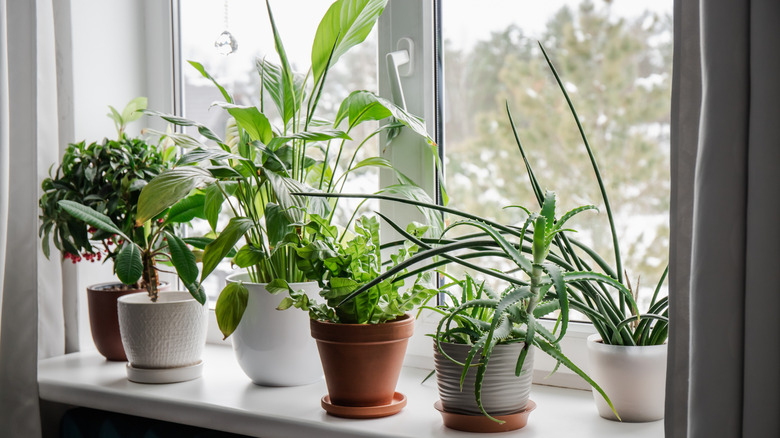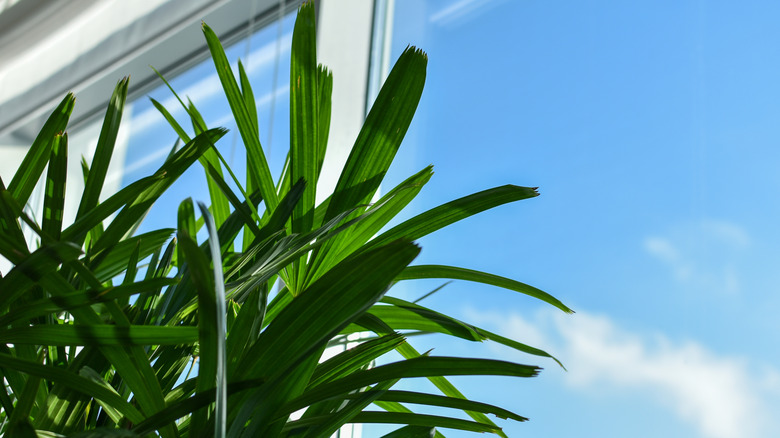Here's What You Should Know About Using Indirect Sunlight On Your Indoor Plants
We may receive a commission on purchases made from links.
When you bring home a new houseplant to enliven your décor or as an addition to your indoor jungle, the first thing you need to know is how much light it needs. That's because the difference between direct and indirect sunlight can decide whether an indoor plant flourishes — or succumbs to a slow demise. Cacti, most succulents, herbs, and other food-producing plants typically need direct sun. On the other hand, plants from rainforests — think Swiss cheese plants and African violets – usually prefer indirect sunlight. Uncertain indoor gardeners can take a tip from houseplant pros and use a simple trick, checking to see how much of the sky the plant can see.
With this assessment, the greater the amount of sky that's visible, the brighter the light — and as long as no direct sunrays touch the plant, that light is indirect. Many indoor plants are very happy in such situations. In fact, some houseplants don't need much sun to survive, since their native habitats are shady, usually in the understory of rainforests, and for plants like this, even some forms of indirect sunlight can be too bright. That's why indirect light is divided into three categories — bright, medium, and low. If you're wondering how to apply this to your spider plants, peace lilies, or other favorite indoor plants, in general, the closer the plant is to a window (without direct sun exposure), the brighter the indirect light.
How to provide houseplants with indirect light
Giving plants the right amount of light can be the difference between a hoya that produces flowers and one that doesn't, or a prayer plant that thrives and one whose foliage turns crispy brown. Plants that require bright indirect light should usually be placed a foot or so away from south-facing windows, often filtered with a sheer white curtain. Those that need medium light can be moved further from the same south-facing window, or may be positioned closely to west or east windows. North-facing windows tend only to provide low light.
However, there are many factors that can either brighten or dim the amount of light coming through a window, such as trees, nearby buildings, bodies of water, and snow, to name just a few. And since light intensity and the angle of the sun change throughout the year, your indoor plants may need to be rearranged in winter and summer, or you may need to choose the perfect grow light to help your plants thrive all year long, similar to the GooingTop LED Grow Light. Checking an indoor plant's exposure to the sky may be a good trick to start with, but if it fails to produce magic, you may prefer to use a more precise tool like a light meter to check light conditions.

